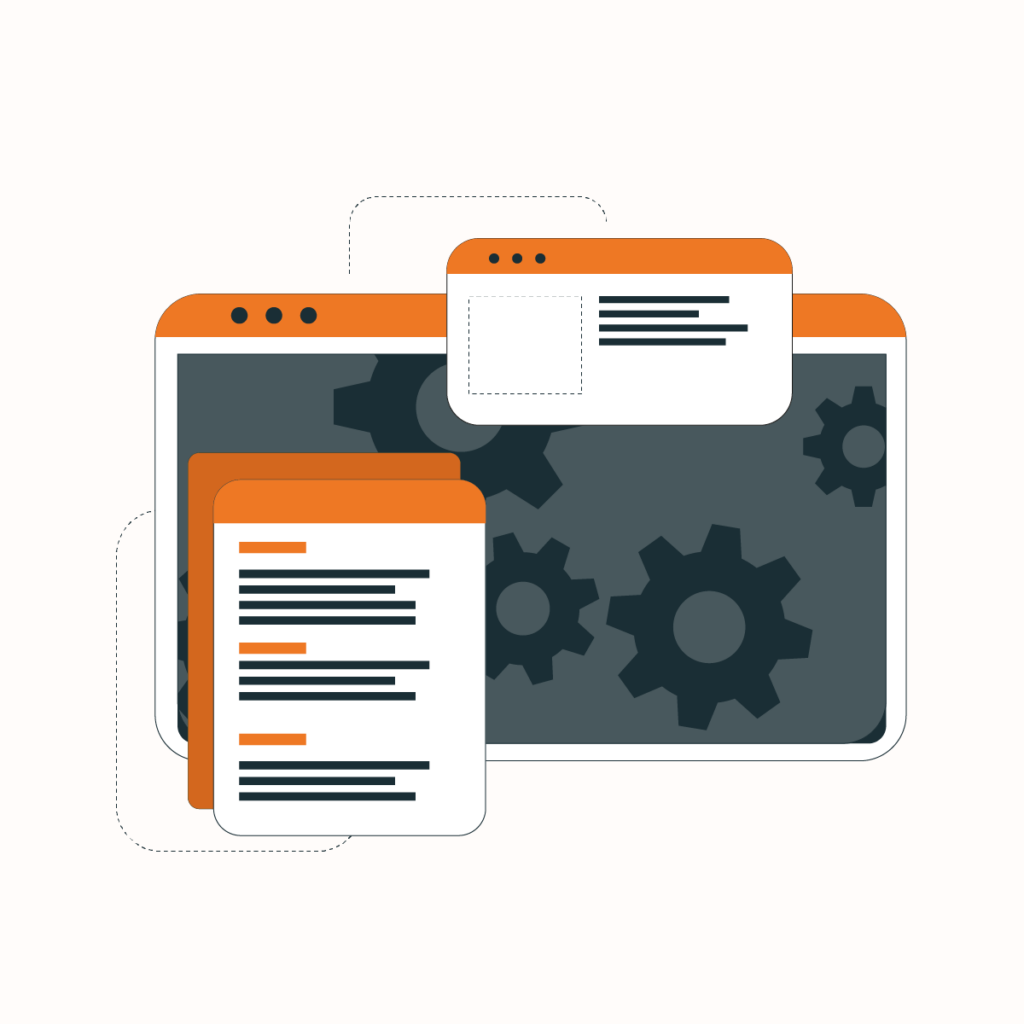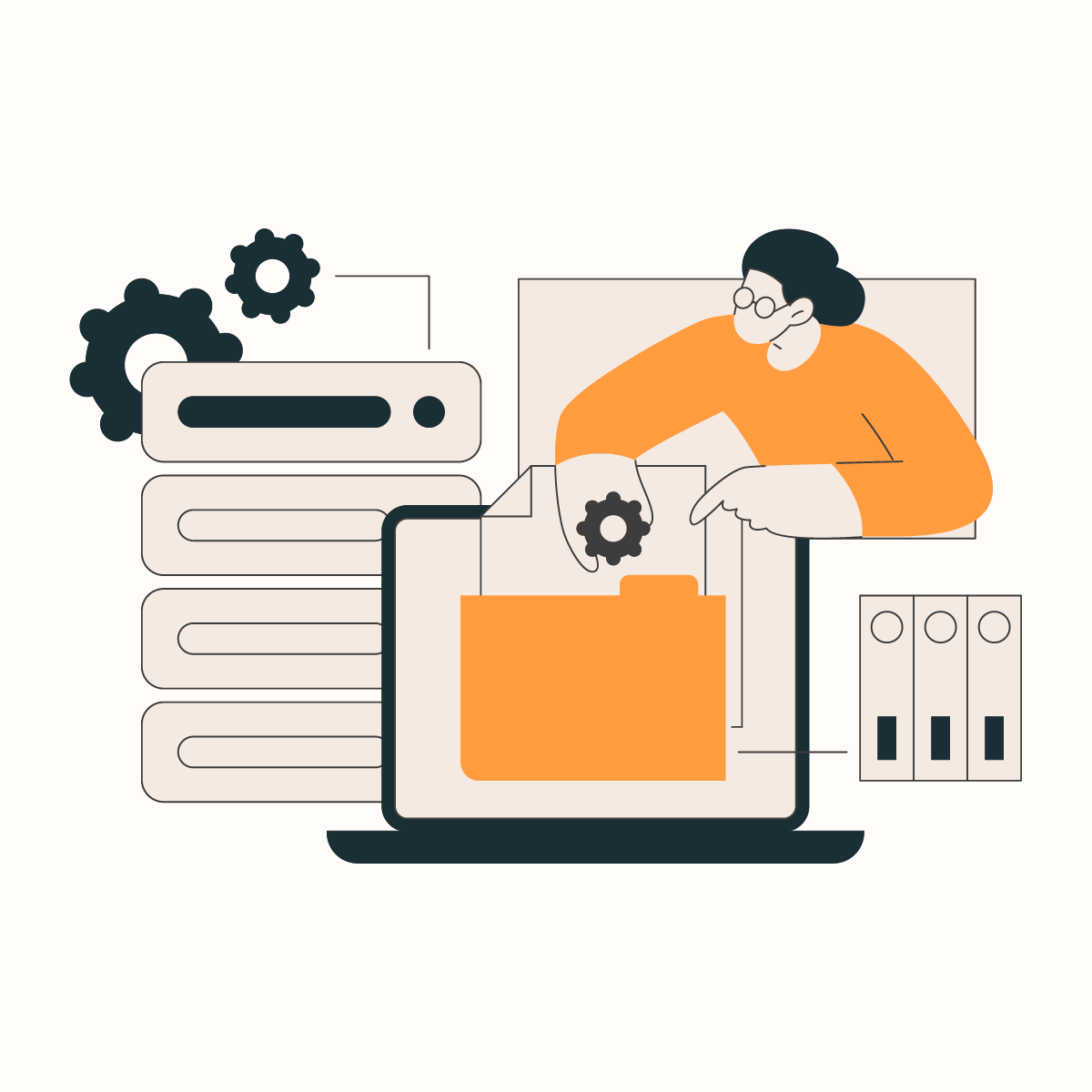Introduction
The 21st century has seen a massive rise in the world of technology, with data at the forefront of it. Almost everything in the world today relies on data, from social media to sports statistics, to the financial industry. With data playing such a key role in the world today, it’s no wonder more companies are taking a closer look at data parsing.
Data parsing is the most important aspect of data analysis, saving hours of work and providing instant access to relevant information. It is impossible for an industry that deals with large amounts of data to do without parsing it.
Data parsing has come a long way since advanced techniques were introduced in the 2010s. Larger data samples, complex data formats, and the need for efficiency have all contributed to creating what we know today.
In this article, we will take an in-depth look at what data parsing is, its types, its role in the current world and the role of NetNut Proxy Solutions.
What is Data Parsing?
Data Parsing refers to converting data from one form to another. This involves taking unstructured or unreadable data and changing it into a structured and comprehensible format. Formats like HTML are unreadable to humans, and converting them to text will make them readable. It is also important to note that not all information is usually converted when parsing data.
In addition, it can help you group or categorize unstructured data, break down data into smaller groups and even extract specific data. Parsing rules are different from one program to the next and have applications in numerous fields like finance, education and telecommunications. Subsequently, parsing is achieved through the actions of a data parser.
How Does Data Parsing Work?
A parser is the tool responsible for parsing and serves as a guide for your computer. Similar to how a blind man would need assistance seeing, the parser serves in this capacity, helping the computer break down large strings of data. The parser then serves to analyze the smaller files and give them the structure defined by the user.
This is how data is broken down into sets and stored, while file formats are converted to one that is easier to understand. In simpler terms, the data parser serves as the brain of the computer and instructs its movements.
Types of Data Parsing
There are two types of data parsing namely: Grammar-driven parsing and Data-driven parsing.
Grammar driven parsing
Much like with grammar in language, this type of parsing has to do with breaking down structures into formats that the computer can understand. It follows rules similar to those found in language which puts a limit to things that don’t fall in the given parameters.
Restrictions are often implemented to help overcome some of the challenges here, but they aren’t always enough. When sentences that are too complex are found, they are typically excluded from analysis.
To help combat problematic or unrecognized sentence formats, another method of parsing data comes into play.
Data-driven parsing
In data-driven parsing, we are introduced to terms like treebanks and smart statistical parsers. These tools help make parsing easier by learning and interpreting different languages. Unlabeled sentences and sentences requiring high precision are all easy to comprehend afterwards.
There are two approaches to data-driven parsing:
Rule-based approach
When a file is well-structured like a receipt, the rule-based approach is employed. The parser can have established templates on how to establish data from a file like this. Unfortunately, this approach has one critical flaw, it will only work if the parser has a template for the document. Any slight deviations and it will be unable to interpret it.
Learning-based approach
A learning-based approach in data-driven processing borders on artificial intelligence. Here, machine learning and natural learning processing assist the parser in extracting data regardless of the nature of the file.
Much like with AI, the parser is trained to recognise new templates and extract data. It is also important to state that a combination of both rule-based and learning-based approaches is typically employed in data-driven parsing.
Advantages of Data Parsing
Parsing data has numerous advantages, especially in a technologically advanced world like ours. Here are a few of its advantages as they apply to industries today:
Less time, more money
When dealing with large packets of data manually, time is the biggest resource you’ll lose. You may also have to allocate multiple individuals to a single project, further allocating other resources.
With parsing, large chunks of data are broken down and organized almost instantly, without the need for human effort. With relevant information easily accessible, work becomes easier and faster, translating into larger profit margins.
Accessible data
Data isn’t always found in usable formats, with file formats like HTML, JSON and CSV being commonly used formats. Any format stored in any of these file formats will be unreadable, and thus unusable.
Parsing data helps to break down and sorts large chunks of data, and converts unusable data to usable format. Here, relevant data is readily accessible without having to sort through a large database
Data flexibility
With parsing, data that was previously unusable is now available in a user-friendly format. It can be used and reused as needed. Information stored in obsolete file formats can also be obtained and stored in modern formats.
What Are The Challenges Of Data Parsing?
There are numerous benefits to parsing data, but there are also several downsides. Much like the benefits, there are several challenges with parsing that you may likely encounter. Here are some possible challenges associated with parsing and their potential solutions:
Inconsistent formats
When dealing with large packets of data, there is bound to be some inconsistency in data formats. When data is sourced from different sources, they tend to be in different formats creating a problem. Parsing can encounter errors or data can be lost.
The best solution is to use parsers that recognise and can work with multiple file formats. Data parsers are programmable and can be designed to recognise multiple formats including difficult ones like HTML. These data parsers are known as flexible parsers.
Missing data
Missing data is a common problem especially when dealing with multiple file formats. Data presents null values or appears empty, which can cause problems in sorting. With incomplete data, sorting is incorrect or incomplete.
You can solve the missing data problem by using a parser that understands missing or null values. Much like flexible parsers, some parsers are equipped to handle and sort missing data. You may need to verify the accuracy of these parsers, but it greatly reduces the workload.
Resource draining
Parsing data tends to be demanding and time-consuming, putting a massive strain on your system. The greater the workload, the more demanding it is, and can ultimately cause performance issues in your system. When parsing large data streams with urgency, it can halt a lot of other processes.
Fast data parsers especially when dealing with large data sets in real-time. You can also get the best out of the parsing process with optimization and eliminating unnecessary processes.
Errors
Where computer processes are involved, there are errors and parsing is no different. There are numerous possible causes of errors and different errors, all of which would likely cause a setback.
Always use data parsers that can handle errors and produce reports. Some data parsers can be programmed with error-handling capacities, making them capable of solving or generating error reports. Error reports can help you identify the problem and solve it.
Application of Data Parsing
In the modern world, there are numerous possible applications of parsing data, making it one of the most important processes. With parsing, multiple fields can improve efficiency and output. Here are some industries and how parsing is applied:
Finance
The financial industry is always dealing with large streams of data and this is where parsing data comes in. Banks and other financial institutions constantly deal with documents, ID cards, invoices and receipts, all of which need to be sorted and saved in the institution’s database. When these documents are manually stored, retrieving information can be troublesome and most times, will take too long.
With parsing, important processes like data extraction from documents, converting files from one format to another and customer onboarding are all quicker. This makes banking faster and eliminates crowds in financial institutions.
Healthcare
The healthcare industry is already tethering on the brink with overworked staff, a lack of resources and tedious tasks. Errors like prescription mixups, wrong patient records and inadequate information are all common features of the industry at present. Patients have been subjected to mild or severe harm and in some cases death, due to administrative errors.
Data parsing is a welcome addition to the world of healthcare. With automated data uploads, data retrievals, patient onboarding and data verification all automated, this industry gets a massive boost. The healthcare workers can now focus on more important tasks and get a well-earned rest.
Legal
The legal world is another where data is constantly moving, typically creating extra work for lawyers. With the amount of money they earn, lawyers would rather be working on important cases than dealing with sorting files. Unfortunately, lawyers have to deal with these files, and often receive different formats, making sorting more difficult.
With multiple clients and sensitive data present, lawyers need a more efficient means of sorting and categorizing information. Parsing data would be helpful in not only sorting but also making them easily accessible through simple searches. Data can also help with anonymization of information aiding in securing sensitive information.
Should I Buy Or Build A Data Parser?
With parsers being the heart of the operation, the biggest question is whether or not you should build one. The power of the parser is what determines speed and efficiency, ultimately bringing all the advantages of parsing.
First off, building a parser is no small feat and would require significant time and resources, but the results will likely be worth it. Buying one on the other hand provides a quick and easy fix, but it comes with preset programming. We’ll look at both options and you can decide which is better for you.
Building a data parser
The first thing to note is that building a parser is rarely an individual endeavor, and is often undertaken by major companies. Here, you are in control and can define what you want from a parser, eliminating any unnecessary functions. Your parser can function more efficiently and improve workflow.
Pros
- Control: You know what you’re expecting from your data parser, and what goes into achieving that. With this inside knowledge and full control of what goes into the parser, you can create the perfect one for your company.
- Functionality: The ability to respond to any errors immediately they arise is a bonus. Any bugs or hiccups can be fixed immediately and your parser will attain optimal functionality.
- Adaptability: You can easily adapt a parser to your specific needs when building it. You can choose exactly what it will do, optimizing it for what you need above all else.
- Cost: Cost may be reduced but only when your parser can serve you in the long run. A pre-built parser may flame out especially when the strain is too much for it to handle.
Cons
- Time-consuming: Building a parser is no small task and can take a long time. After the parser is built, it’ll still need tests, and possibly a few tweaks before it is ready to go. The entire procedure can take months, during which other resources will be used.
- Expensive: It is ironic that while cost is an advantage, it still serves as a disadvantage. Building a parser is an expensive undertaking, one that is more than buying a parser.
- Resources: The most important thing you’ll need here is skilled personnel. It may be possible to handle it in-house but odds are that you’ll need outside help, which would also mean expenses.
Buying a data parser
Buying a data parser is the most popular choice and with many options available, may be your best choice.
Pros
- Customer Support: A store-bought data was likely built by a large company, who likely has a customer support team. If there are any issues with the parser, you have quick access to help, which is 24/7 in most cases.
- Time-Saving: The biggest benefit of a store-bought data parser is that it is always ready to use. All testing has been completed and it has been passed for service. You can place it on your computer and it starts working right away.
- Cost: It is the cheaper option in the short run, as it’s ready to go and won’t demand any further resources.
Cons
- No control: The biggest downside of a store-bought data parser is that there is no control on your end. The parser is already programmed and will not go outside its established parameters.
- Cost: If you are looking for a powerful data parser, it can be very expensive. It is however cheaper than hiring a team to build you one and is faster.
Using NetNut Proxy Servers For Data Parsing
One common challenge faced in parsing is incomplete data, especially when data scraping is employed. Websites often employ trackers to determine which networks are gathering information and ban repeat visitors. One way around this is to use a proxy server provider like NetNut.
NetNut is designed to meet all data-scraping needs. With various proxies at your disposal, you have an intermediary between any necessary websites and your device, allowing your data scraping and parsing to continue uninterrupted.
NetNut gives you access to static residential proxies, allowing your web sessions to remain uninterrupted without changing your IP address. You can also join a community of over 200 million users with rotating residential proxies and never have to worry about CAPTCHAs. With US residential proxies and ISP proxies, data scraping and parsing will be at their peak. You also have access to customized data scraping solutions with NetNut’s Mobile Proxy.
Conclusion
In this article, we have examined data parsing and its types. We have also established how it works, the types of parsing, and its application in different industries, and considered whether you should buy or build one.
data parsing greatly reduces the rate of sorting and processing files. It also reduces human errors and improves the efficiency of data sorting, storage and recollection. This makes data parsing a must-have for every business out there.
If you have any questions or need assistance in finding the best proxy solution for your needs, contact us today!
Frequently Asked Questions
What is an example of data parsing?
One prominent example of data parsing is converting files from one format to another. Say you have an HTML file and need the data in it, but can’t read it, you need to convert it to a more suitable format like a PDL or CSV. This allows you to get the data needed without damaging the original file or losing key information.
Why do we need data parsing?
Data parsing is necessary because data is needed in various forms. Parsing also makes sorting, classification and storage of data easier. Without Parsing, data would frequently be lost or unreadable, and we would rely on humans to handle sorting and storage.
What are the benefits of data parsing?
The biggest benefit of data parsing is that it saves time and money. With data storage and sorting sorted, access and readability are improved. Humans can focus on other aspects of their jobs hence, efficiency is improved.









